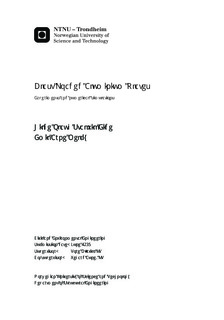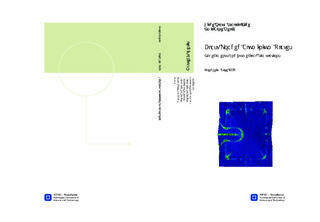| dc.contributor.advisor | Børvik, Tore | nb_NO |
| dc.contributor.advisor | Aune, Vegard | nb_NO |
| dc.contributor.author | Melby, Emil Arne | nb_NO |
| dc.contributor.author | Eide, Hilde Olaug Stakvik | nb_NO |
| dc.date.accessioned | 2014-12-19T12:02:20Z | |
| dc.date.available | 2014-12-19T12:02:20Z | |
| dc.date.created | 2013-09-19 | nb_NO |
| dc.date.issued | 2013 | nb_NO |
| dc.identifier | 649744 | nb_NO |
| dc.identifier | ntnudaim:9608 | nb_NO |
| dc.identifier.uri | http://hdl.handle.net/11250/237258 | |
| dc.description.abstract | Light and flexible protective constructions in aluminium could be subjected to a blast load. In this thesis the effect of blast loading on aluminium plates of the type 1050A ? H14 was studied through experiments and numerical simulations. The effect of fragmentation was idealized with predrilled holes. The thesis was written at the Structural Impact Laboratory (SIMLab) at NTNU in collaboration with the Norwegian Defence Estates Agency (NDEA).Tensile tests revealed a clearly anisotropic behavior of the 1050A ? H14 material. However, preliminary studies indicated that the grain direction had a minimal impact on the plate deformation, and that the modified Johnson-Cook material model was a sufficient approach.It was performed experiments with the gas gun at SIMLab to apply blast loading on aluminium plates. The gas gun showed excellent repeatability, but the pressure and impulse it caused did not emulate a real explosion. It seemed that the loading applied from the gas gun was asymmetric and varied over the plate. Thus, the experimental setup needs to be modified in order to get more insight into the problem. No fracture occurred in the gas gun experiments. Numerical simulations in LS-DYNA were used to validate the load curves obtained from the experiments. The load curves was obtained through pressure transducers that were placed on ¼ of the aluminium plate, and the numerical analysis showed that these values were not representative for the loading that occurred on the entire plate. The aluminium plates with diamond shaped holes and slits showed similar capacity as the plates without holes for small loads. Digital Image Correlation (DIC) was used to describe the plate deformation, and proved to be an accurate method to compare the results from the numerical simulation in LS-DYNA to the gas gun experiments. Numerical analyses with the finite element software IMPETUS Afea was used to simulate blast loading with the use of the Corpuscular method. The results indicated that the geometry of the charge affected the magnitude of the blast load in a significant way. IMPETUS Afea seems to be not suited to simulate long-range blast loading. | nb_NO |
| dc.language | eng | nb_NO |
| dc.publisher | Institutt for konstruksjonsteknikk | nb_NO |
| dc.title | Blast Loaded Aluminium Plates: Experiments and numerical simulations | nb_NO |
| dc.type | Master thesis | nb_NO |
| dc.source.pagenumber | 137 | nb_NO |
| dc.contributor.department | Norges teknisk-naturvitenskapelige universitet, Fakultet for ingeniørvitenskap og teknologi, Institutt for konstruksjonsteknikk | nb_NO |

